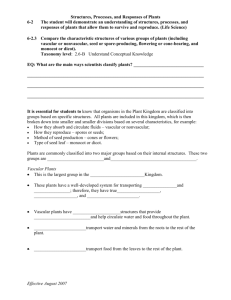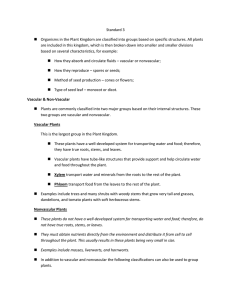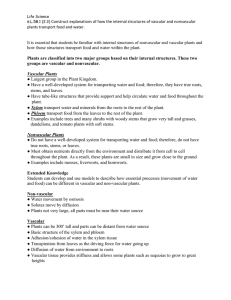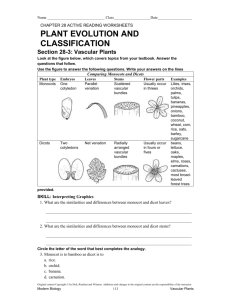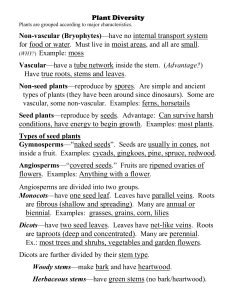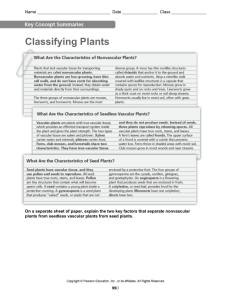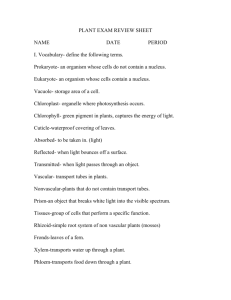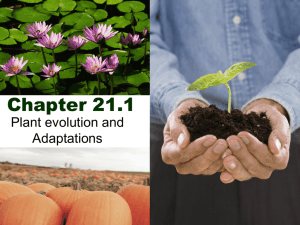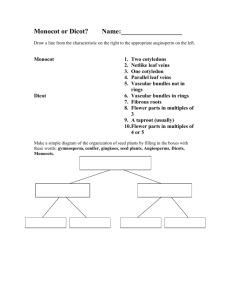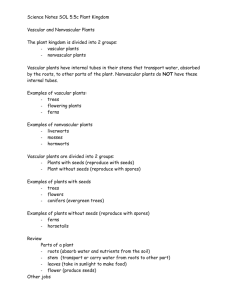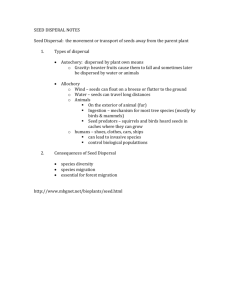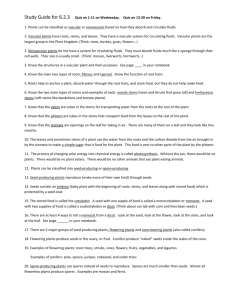6-2.3 Standard Notes
advertisement
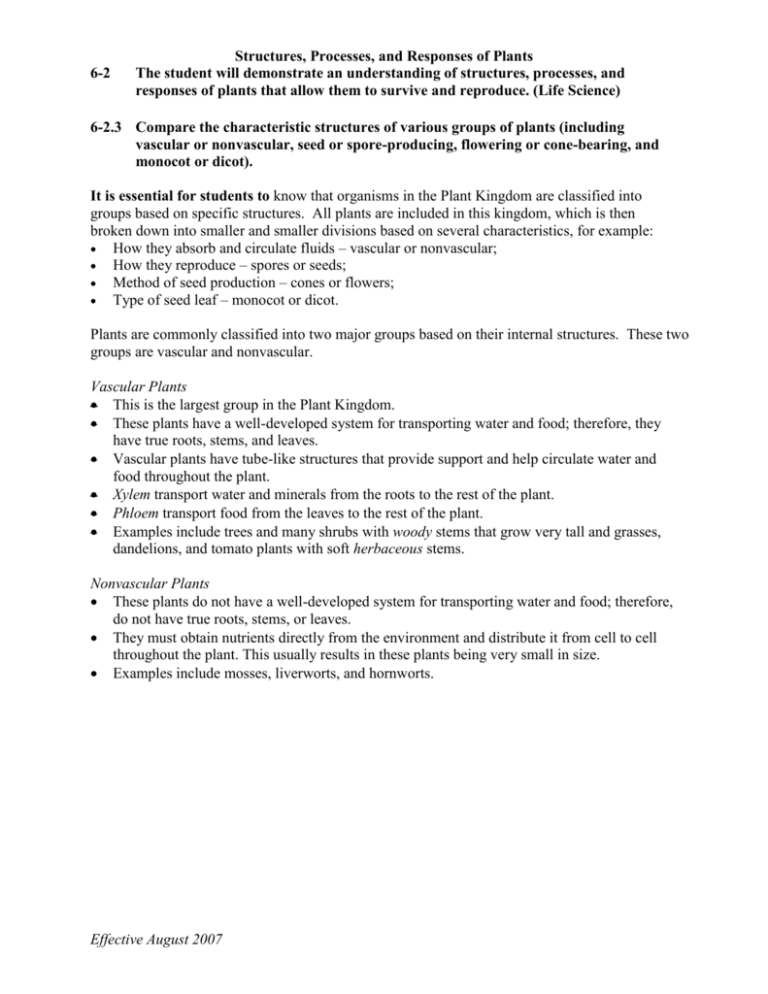
6-2 Structures, Processes, and Responses of Plants The student will demonstrate an understanding of structures, processes, and responses of plants that allow them to survive and reproduce. (Life Science) 6-2.3 Compare the characteristic structures of various groups of plants (including vascular or nonvascular, seed or spore-producing, flowering or cone-bearing, and monocot or dicot). It is essential for students to know that organisms in the Plant Kingdom are classified into groups based on specific structures. All plants are included in this kingdom, which is then broken down into smaller and smaller divisions based on several characteristics, for example: How they absorb and circulate fluids – vascular or nonvascular; How they reproduce – spores or seeds; Method of seed production – cones or flowers; Type of seed leaf – monocot or dicot. Plants are commonly classified into two major groups based on their internal structures. These two groups are vascular and nonvascular. Vascular Plants This is the largest group in the Plant Kingdom. These plants have a well-developed system for transporting water and food; therefore, they have true roots, stems, and leaves. Vascular plants have tube-like structures that provide support and help circulate water and food throughout the plant. Xylem transport water and minerals from the roots to the rest of the plant. Phloem transport food from the leaves to the rest of the plant. Examples include trees and many shrubs with woody stems that grow very tall and grasses, dandelions, and tomato plants with soft herbaceous stems. Nonvascular Plants These plants do not have a well-developed system for transporting water and food; therefore, do not have true roots, stems, or leaves. They must obtain nutrients directly from the environment and distribute it from cell to cell throughout the plant. This usually results in these plants being very small in size. Examples include mosses, liverworts, and hornworts. Effective August 2007 6-2 Structures, Processes, and Responses of Plants The student will demonstrate an understanding of structures, processes, and responses of plants that allow them to survive and reproduce. (Life Science) The following classifications can also be used to group plants. Seed-producing Seed-producing plants are plants that reproduce through seeds. Seed plants make their own seeds. Seeds contain the plant embryo (the beginnings of roots, stems, and leaves) and stored food (cotyledons) and are surrounded by a seed coat. From those seeds, new plants grow. There are two major groups of seed-producing plants: cone-bearing plants and flowering plants. Spore-producing Spore-producing plants are plants that produce spores for reproduction instead of seeds. Spores are much smaller than seeds. Almost all flowerless plants produce spores. Examples include mosses and ferns. Flowering Plants Flowering plants differ from conifers because they grow their seeds inside an ovary, which is embedded in a flower. The flower then becomes a fruit containing the seeds. Examples include most trees, shrubs, vines, flowers, fruits, vegetables, and legumes. Cone-bearing Plants Most cone-bearing plants are evergreen with needle-like leaves. Conifers never have flowers but produce seeds in cones. Examples include pine, spruce, juniper, redwood, and cedar trees. Monocot A seed with one food storage area is called a monocotyledon, or monocot. Flowers of monocots have either three petals or multiples of three. The leaves of monocots are long and slender with veins that are parallel to each other. The vascular tube structures are usually scattered randomly throughout the stem. Examples include grass, corn, rice, lilies, and tulips. Dicot A seed with two food storage areas is called a dicotyledon, or dicot. Flowers of dicots have either four or five petals or multiples of these numbers. The leaves are usually wide with branching veins. The vascular tube structures are arranged in circular bundles. Examples include roses, dandelions, maple, and oak trees. Effective August 2007
